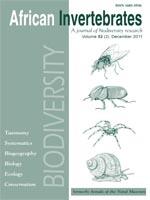Mormotomyia hirsuta Austen, 1936 is one of the most extraordinary and unusual looking Diptera and was placed by E.E. Austen into a family of its own, the Mormotomyiidae, upon its discovery in 1933. Adults superficially resemble small solifugids (sun spiders), having extremely long legs that are clothed, especially in males, in very long, closely-packed brown hair-like setae. The wings are reduced to dysfunctional straps, the halteres to small nodular processes, and the eyes are greatly reduced. M. hirsuta is cavernicolous in all life stages and guanobious at least in the larval stages. The phylogenetic position of the family has long been a subject of much speculation and disagreement. Until recently M. hirsuta had only been collected on two occasions: in May 1933 and December 1948, although there have been numerous unsuccessful rediscovery attempts. The species is apparently confined to the type locality and is, therefore, widely regarded as the “rarest fly in the world”. Here we report the rediscovery of adults, larvae and puparia at the type locality, a cave-like rock fissure at Ukasi Hill, Eastern Province, Kenya, in December 2010. This rediscovery has facilitated a more thorough examination and study of the immature stages using scanning electron microscopy (SEM). This has revealed numerous microstructures not previously described by van Emden in 1950, and the larva and puparium are therefore re-described. An SEM study was conducted of the leg features of adults, specifically the form and structure of the tarsal claw and pulvillus, and these were compared to the same structures in examples of the true bat fly ectoparasitic families Nycteribiidae and Streblidae, and to the phoretic Mystacinobiidae. The basal sclerites of the wing are interpreted for the first time using SEM, the functional morphology of the larva, puparium and adult is discussed and notes are provided on the biology, development and cavernicolous habits of the species. The cuticular parts of the internal female reproductive tract are further described. They comprise a tubular vagina, two sclerotized spermathecae, paired accessory glands, and a small one-chambered sclerotized ventral receptacle. These are compared to species in the Mystacinobiidae, Sphaeroceroidea and Ephydroidea, and it is concluded that the structure of the female reproductive tract lends support to the inclusion of the Mormotomyiidae in the Ephydroidea.
How to translate text using browser tools
1 June 2011
Further Details of the Morphology of the Enigmatic African Fly Mormotomyia hirsuta Austen (Diptera: Mormotomyiidae)
Ashley H. Kirk-Spriggs,
Marion Kotrba,
Robert S. Copeland

African Invertebrates
Vol. 52 • No. 1
June 2011
Vol. 52 • No. 1
June 2011
Afrotropical
bat fly
biospeleology
cavernicolous
female reproductive tract
functional morphology
guanobious




